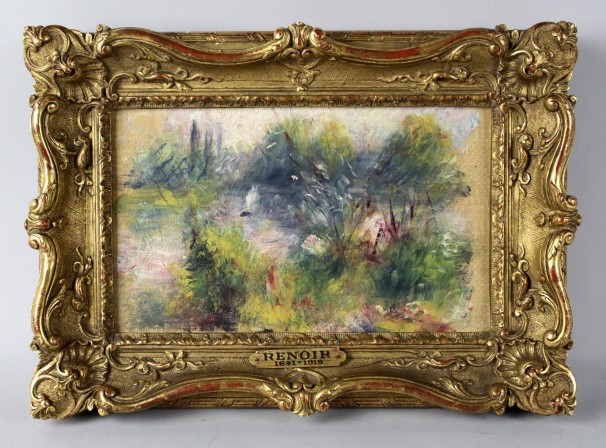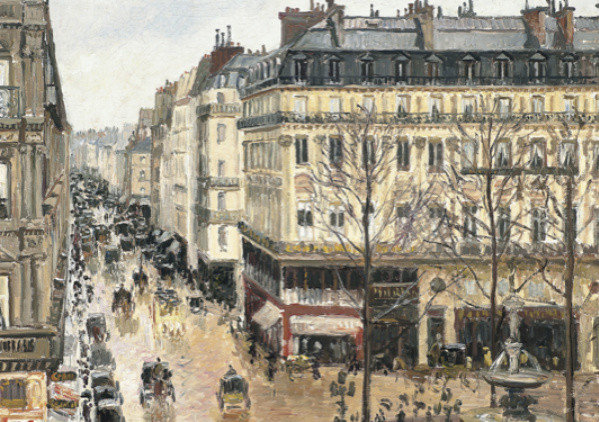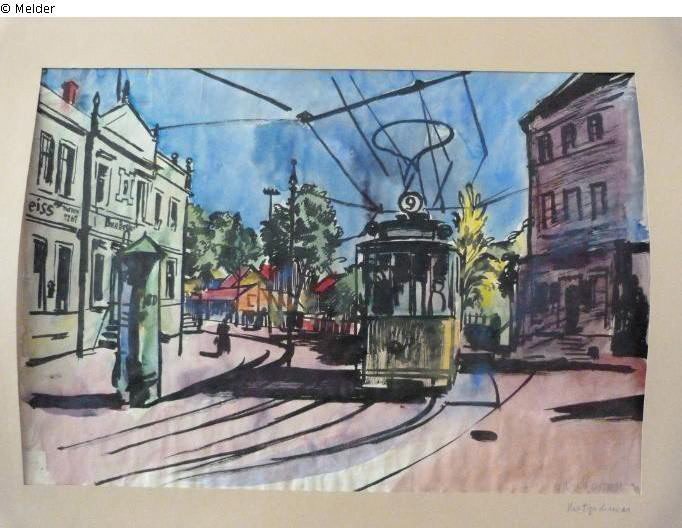I’ve just returned from my presentation in Heidelberg at the Hochschule für Jüdische Studien in Heidelberg at the conference Ersessene Kunst—Der Fall Gurlitt; Appropriated Art—The Gurlitt Case. The presentations were, without exception, outstanding. They ranged from rarely-told case stories, to sharp insights of some of the overarching principles that guide the the Gurlitt case and similar events. As the discussions made clear, this case will not be easily resolved. That in turn makes recent reports that Cornelius Gurlitt has indicated a willingess to discuss the art's return all the more significant.
Recap of Ersessene Kunst—Der Fall Gurlitt (Appropriated Art—The Gurlitt Case): January 26, 2014 in Heidelberg
Topics: Maria Altmann, Leopold Reidemester, Ministerin für Justiz und Kultur, Stuttgart, Das Alte Schauspielhaus, Cologne, Irina Alter, Portrait of Adele Bloch-Bauer, veschollene Kunst, Focus, Schwabinger Kunstfund, Aschbach Castle, Mussolini, Wiedergutmachung, Annette Weber, Monte Cassino, Cornelius Gurlitt, Corinna Budras, S. Lane Faison, Breslau, Universität Heidelberg, Augsburg, Aryanization, Anat Feinberg, Willi Korte, Schwabinger Kunstfund. Kunstfund München, Monuments Man, Jud Süss, Wrocław, Dresden, Gurlitt Task Force, Germany, Silesia, Fall Gurlitt, Wallraf-Richartz Museum, Köln, Nazi-looted art, Henry Keazor, Gurlitt Collection, Appropriated Art the Gurlitt Case, Schloss Aschbach, Die Welt, Kurpfälzische Museum Heidelberg, Hochschule für Judische Studien Heidelberg, Karl Haberstock, Eberhard Karls-Universität Tübingen, Emily Löffler, CSU, Williams College, Hildebrand Gurlit, Entartete Kunst, Universität Zürich, Arisierung, Lehrstuhl für Römisches Recht und Privatrecht, Württemberg, Schlesien, Nürnberger Institut, Hamburg, Otto Förster, Rückgabe, Beutekunst, 'Stürmer-Bibliothek', Magdeburg, Portrait of Amalie Zuckerkandl, Ersessene Kunst, Katja Terlau, Art Loss Recovery Unit, Jim Tobias, Hermitage, Gurlitt, Bavaria, Johannes Heil, Wien, Sullivan & Worcester LLP, Lucas Elmenhorst, Events, Kunsthistorisches Institut, Nürnberg, Jüdisches Museum Frankfurt, Looted Art, „Sturmer-Library“, degenerate art, Seminar für Neuere Geschichte, Wolfgang Ernst, Justizminister, Göring, www.lostart.de, Nazi art, Raubkunst, Nicholas M. O'Donnell, Frieder Hepp, Verjährung, Vienna, Claudius Krausharr, Münchner Kunstfund, Zwickau, Kajetan Mühlmann, New York, Werner Haftmann, FAZ Frankfurt, Felicitas Heiman-Jellinek
Bavaria to Review Draft Revision to Statute of Limitations on Claims to Art Found in Gurlitt Apartment
Die Welt reports today that a scheduled cabinet meeting of the government of Bavaria includes discussion of a draft revision to the state’s statute of limitations. Justice Minister Winfried Bausback (CSU) has apparently stated his desire to ensure that claimants like those heirs to owners of works found in Cornelius Gurlitt’s apartment will not be barred by the statute of limitations, following through on statements he made last year after being selected. There has been lively discussion of whether such claims would be time barred, but this revision would presumably be intended to answer the question broadly. It could signal the beginning of legislative steps to address the situation. The previous Justice and Culture Minister Beate Merk had come under heavy criticism, but a new minister may have room to make some changes. And, in a parliamentary system, the consensus of the ruling government is more significant in anticipating the passage of legislation.
Topics: Ministerin für Justiz und Kultur, Legal Tribune, veschollene Kunst, Beate Merk, Cornelius Gurlitt, Augsburg, Schwabinger Kunstfund. Kunstfund München, Gurlitt Task Force, Germany, Fall Gurlitt, Gurlitt Collection, Die Welt, Lorenz Kähler, CSU, Hildebrand Gurlit, Entartete Kunst, Ingeborg Berggreen-Merkel, Beutekunst, Magdeburg, Gurlitt, Bavaria, degenerate art, Freistaat Bayern, Justizminister, www.lostart.de, Nazi art, Raubkunst, Verjährung, Winfried Bausback
Flea Market Renoir Battle Focuses on the Hearsay Rule
The last remaining claimants for the 1879 painting by Pierre Auguste Renoir, Paysage bords de Seine that surfaced in the possession of a woman who claimed to have found it at a flea market, have filed summary judgment papers seeking final disposition of the case without need of a trial. The Baltimore Museum of Art has made its case that the painting was stolen from the museum in 1951, while Martha Fuqua alleges that she purchased it in good faith at a Virginia flea market in 2009 before attempting to sell it at the Potomack Company. The U.S. government seized the painting from the auction house and filed an interpleader action to determine the true owner; the other principle claimant (Fireman’s Fund Insurance) dropped out of the case last fall without explanation, apparently pursuant to an assignment. Heirs of the original donor to the BMA never responded or made claim to the painting. The case will now turn at summary judgment on the hearsay rule, a topic that have bedeviled generations of law students and lawyers.
Topics: hearsay, authentication, Pierre-Auguste Renoir, Potomack Company, flea market Renoir, ancient documents, Gurlitt, Martha Fuqua, Baltimore Museum of Art, Litigation, business records exception, summary judgment, Museums, Paysage Bords de Seine, FRCP 56
Cassirer Heirs' Claims to Pissarro Work Revived by Appeals Court, the Year 2013 Shows that the Tide for Restitution May be Shifting Again
The U.S. Court of Appeals for the 9th Circuit restored last week claims by heirs of Lilly Cassirer against the Thyssen-Bornemisza Collection for the return of the Camille Pissarro painting Rue St. Honoré, après-midi, êffet de pluie.
Topics: Nuremberg laws, Schwabinger Kunstfund, Cornelius Gurlitt, Lilly Cassirer, California Code of Civil Procedure § 338(c), Dorothy Nelson, Thyssen-Bornemisza Collection, Julius Schoeps, Rue St. Honoré après-midi êffet de pluie, Claude Cassirer, Von Saher v. Norton Simon, de Csepel, Jacques Goudstikker, California Code of Civil Procedure § 354.3, Gurlitt Collection, Foreign Sovereign Immunities Act, Hans Sachs, Von Saher v. Norton Simon Museum of Art at Pasaden, Madame Soler, Bundesgerichtshof, Hildebrand Gurlit, Entartete Kunst, Hans-Heinrich Thyssen-Bornemisza, Hungarian National Gallery, Nazis, Munich, Deutches Historisches Museum, FSIA, Preemption, Gurlitt, Harry Pregerson, Restitution, field preemption, Marei Von Saher, Herzog collection, Bavaria, Claudia Seger-Thomschitz, Looted Art, World War II, Foreign Sovereign Immunities, Pinakothek der Moderne, degenerate art, Altmann v. Republic of Austria, 578 F.3d 1016, Freistaat Bayern, beschlagnahmte Kunst, Camille Pissarro, Kim McLane Wardlaw, Nürnberger Gesetze, Raubkunst, Museum of Fine Arts Boston, Cassirer v. Thyssen-Bornemisza Collection, verschollene Kunst, Kunstfund München
Gurlitt Vows to Fight for Art Collection, Possible Limitations Under German Law Still Unclear. Does Austria Have Say?
Der Spiegel conducted a face to face interview with Cornelius Gurlitt that was published over the weekend, addressing his intentions about the 1,400 artworks connected to Nazi looting. Most striking was Gurlitt’s declaration with regard to the artworks seized by Bavarian tax authorities “I will give nothing back willingly.” The highlights of the interview, available in both German and English (the fuller version only in print, in German), ranges from discussing Gurlitt’s reclusive existence, to his perceived victimhood, to some standard-fare denialism (like that Hildebrand engaged in the commerce of “degenerate art” nearly always sold under duress or worse only in order to “save” the art).
Topics: veschollene Kunst, Cornelius Gurlitt, Schwabinger Kunstfund. Kunstfund München, Verjährungsfrist, Legal Times, prescriptive ownership, Gurlitt Collection, österreiches Recht, Bundesgerichtshof, Hildebrand Gurlit, Entartete Kunst, Nazis, Munich, Salzburg, Gurlitt, Restitution, City of Gotha et al. v. Sotheby’s et al., Statute of Limitations, Looted Art, World War II, deutches Recht, degenerate art, Austria, München, Raubkunst, German Civil Code § 221, Österreich
Gurlitt Taskforce Announces Plan to Post 590 More Works. Choice of Law, Procedure, and Venue for Claims Up in the Air
Ingeborg Berggreen-Merkel, leader of the newly formed federal “Schwabing Art Find” taskforce, announced plans to release information about 590 additional works found in the apartment of Cornelius Gurlitt, after the posting earlier this week of 25 works at www.lostart.de. Meanwhile, the heirs of Max Ernst have publicly disclosed (through their attorney Jürgen Wilhelm in Cologne) their claim to certain of the works in the Gurlitt find. The federal authorities appear to be gaining the upper hand for disclosure against the tax investigators in Bavaria who initially seized the collection, which was not a foregone conclusion.
Topics: Cologne, veschollene Kunst, the Lion Tamer, Lempertz, Cornelius Gurlitt, Schwabinger Kunstfund. Kunstfund München, Max Liebermann, Köln, Gurlitt Collection, Foreign Sovereign Immunities Act, Hildebrand Gurlit, Entartete Kunst, Nazis, Ingeborg Berggreen-Merkel, Hermann Goring, Michael Hulton, FSIA, Gurlitt, Restitution, conversion, Looted Art, World War II, degenerate art, Altmann v. Republic of Austria, Löwenbändiger, Raubkunst, Alfred Flechteim, Jürgen Wilhelm, Max Ernst






